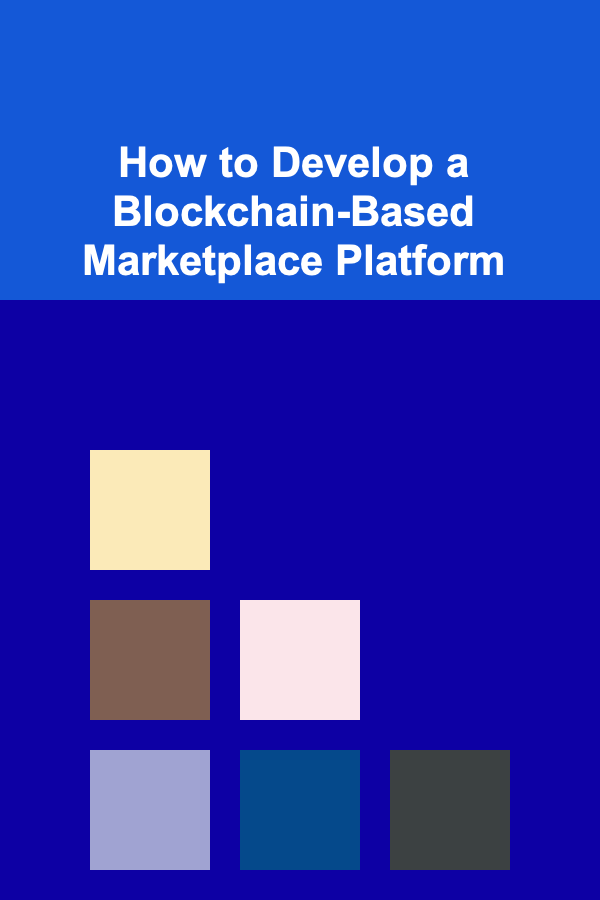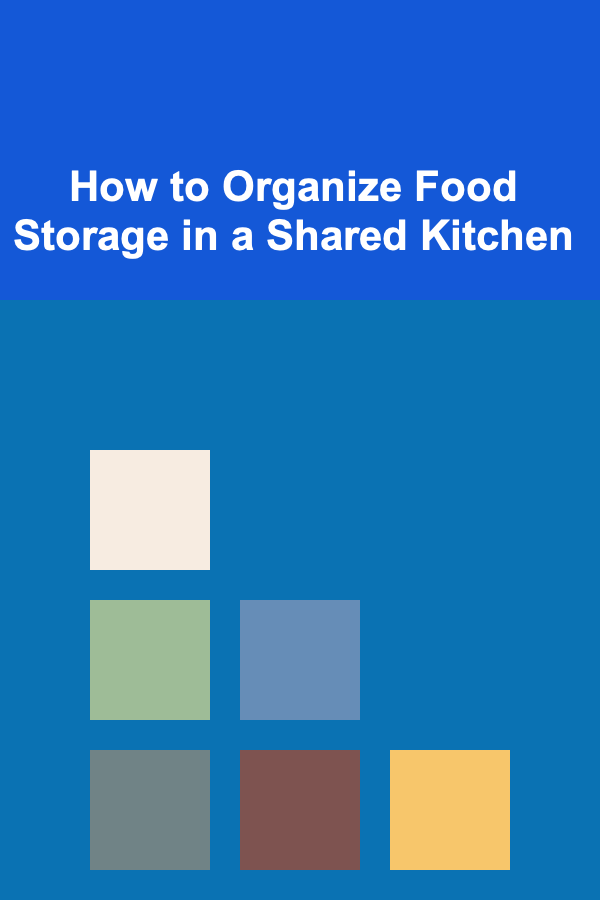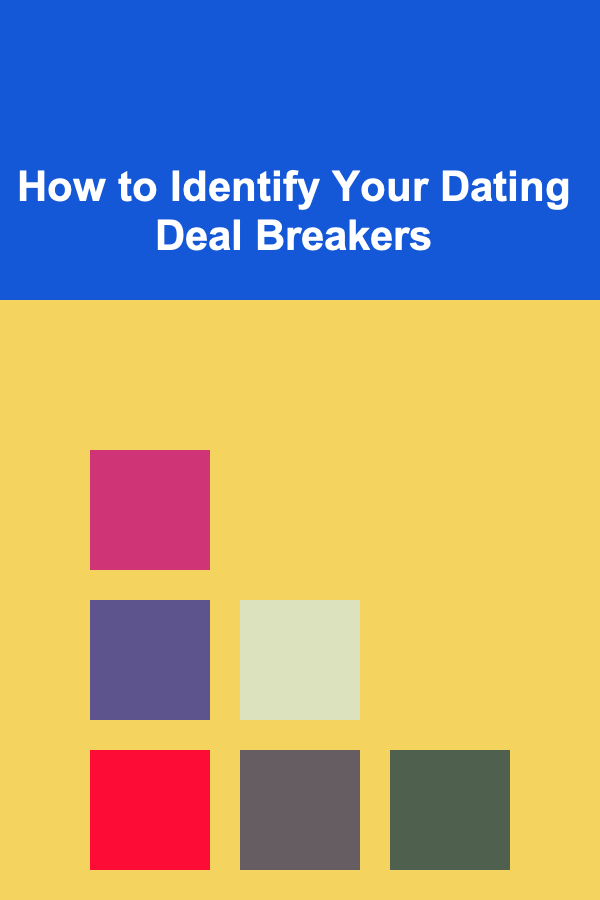
How to Develop a Blockchain-Based Marketplace Platform
ebook include PDF & Audio bundle (Micro Guide)
$12.99$7.99
Limited Time Offer! Order within the next:

In recent years, blockchain technology has gained significant traction across various industries due to its decentralized, secure, and transparent nature. Blockchain's ability to eliminate intermediaries, provide transparency, and ensure trust has made it a powerful tool for creating decentralized applications, particularly in the context of marketplace platforms. A blockchain-based marketplace offers users a secure and efficient way to engage in transactions without the need for centralized intermediaries.
In this article, we will explore how to develop a blockchain-based marketplace platform, covering everything from understanding the basic components of a blockchain to the implementation process and real-world examples. This comprehensive guide will provide you with the tools, technologies, and frameworks necessary to create a functional, secure, and scalable blockchain-based marketplace.
Understanding Blockchain and Its Relevance to Marketplaces
Before diving into the development of a blockchain-based marketplace, it is crucial to understand how blockchain works and why it is a suitable solution for online marketplaces.
What is Blockchain?
At its core, a blockchain is a distributed ledger technology (DLT) that records transactions across multiple computers in a way that ensures the data is immutable and transparent. This decentralized nature removes the need for a central authority, making blockchain inherently secure and resistant to censorship or fraud.
A blockchain consists of blocks, which contain transaction data, and these blocks are linked together in a chain. Each block contains a timestamp, a reference to the previous block, and the cryptographic hash of the data, ensuring the integrity and immutability of the entire chain.
Why Use Blockchain for Marketplaces?
Blockchain technology offers several key advantages that make it ideal for marketplace applications:
- Decentralization: Traditional marketplaces rely on central authorities (like eBay or Amazon) to facilitate transactions and maintain trust between buyers and sellers. With blockchain, this trust is established through the decentralized consensus of network participants, eliminating the need for intermediaries.
- Security: Blockchain's cryptographic techniques ensure that transactions are secure and tamper-proof. This enhances the trustworthiness of the marketplace, as users can verify the authenticity and integrity of transactions.
- Transparency: Blockchain's public ledger makes it possible for all participants to access a transparent record of transactions. This transparency fosters trust among buyers and sellers, as they can independently verify the legitimacy of a product or service.
- Lower Transaction Costs: By removing intermediaries such as banks or payment processors, blockchain can reduce transaction fees and make cross-border transactions cheaper and faster.
- Smart Contracts: Blockchain platforms like Ethereum enable the use of smart contracts---self-executing contracts with predefined terms and conditions. Smart contracts can automate complex transactions, reducing the need for manual intervention and increasing efficiency.
These advantages make blockchain an attractive solution for online marketplaces, particularly in scenarios where trust, security, and transparency are paramount.
Key Components of a Blockchain-Based Marketplace
To develop a blockchain-based marketplace, it is essential to understand the key components that make up the platform. These include the blockchain protocol, smart contracts, tokens, and the user interface (UI).
1. Blockchain Protocol
The blockchain protocol is the underlying technology that powers the decentralized marketplace. Popular blockchain platforms like Ethereum , Binance Smart Chain (BSC) , and Polygon provide the necessary infrastructure for building decentralized applications (dApps).
For a blockchain-based marketplace, you must choose the appropriate blockchain protocol based on factors such as scalability, transaction speed, and cost. Ethereum, for example, is a widely used platform for developing decentralized applications (dApps) and supports the use of smart contracts.
2. Smart Contracts
Smart contracts are self-executing contracts that automatically enforce the terms and conditions of an agreement between parties. In a blockchain-based marketplace, smart contracts play a pivotal role in facilitating transactions, ensuring that the conditions are met before funds are exchanged.
For example, a smart contract could automatically release payment to a seller once the buyer confirms receipt of goods or services. This eliminates the need for a third-party intermediary, reducing costs and speeding up the transaction process.
3. Tokens
Tokens are digital assets that can represent various types of value within the marketplace. In a blockchain-based marketplace, tokens can be used as the medium of exchange, acting as a form of cryptocurrency. Tokens can also be used to represent ownership of goods, access to services, or voting rights in decentralized governance mechanisms.
Tokens can be created using standards such as ERC-20 or ERC-721 (for non-fungible tokens, or NFTs) on the Ethereum blockchain, depending on the needs of the marketplace.
4. User Interface (UI)
The user interface (UI) of a blockchain-based marketplace should be user-friendly and accessible to a wide range of users, including those who may not be familiar with blockchain technology. The UI should allow users to browse products or services, place orders, make payments, and view transaction history---all while interacting with the blockchain backend seamlessly.
The UI will also need to integrate with web3 wallets , such as MetaMask, which allow users to interact with blockchain networks. Users should be able to connect their wallets, approve transactions, and manage their tokens directly through the UI.
Steps to Develop a Blockchain-Based Marketplace
Step 1: Define the Marketplace Model
Before beginning the technical development of your marketplace, it is important to define the business model and marketplace structure. This includes the types of products or services offered, the target audience, and how the marketplace will facilitate transactions.
- Peer-to-Peer (P2P): A decentralized marketplace where buyers and sellers can transact directly with each other, without the need for an intermediary.
- Decentralized Exchange (DEX): A marketplace for trading digital assets (e.g., cryptocurrencies, tokens, NFTs) directly between users, without the need for centralized control.
It is also crucial to decide on the payment model. You could use a native token for transactions or allow users to pay with existing cryptocurrencies like Bitcoin or Ethereum.
Step 2: Choose the Blockchain Platform
Choosing the right blockchain platform is essential to the success of your marketplace. Factors such as scalability, security, and transaction costs will influence your decision. Ethereum, for instance, is popular for its smart contract capabilities, but high transaction fees could be a drawback for large-scale marketplaces. In contrast, Binance Smart Chain and Polygon offer lower fees and faster transaction speeds, making them viable alternatives.
Consider the following factors when choosing a blockchain platform:
- Scalability: How well does the platform handle a large number of transactions?
- Transaction Fees: What are the fees associated with processing transactions on the network?
- Security: Does the platform have robust security features to protect users and prevent fraud?
- Smart Contract Support: Does the platform support smart contracts, and how customizable are they?
Step 3: Design and Develop Smart Contracts
Smart contracts will handle the core logic of your blockchain-based marketplace. You need to write smart contracts for different functions, including:
- Payment Processing: Handling the transfer of funds between buyers and sellers.
- Escrow: Implementing an escrow system to hold funds until conditions are met (e.g., product delivery confirmation).
- Product Listing: Managing product listings, including details such as price, description, and seller information.
- Dispute Resolution: Implementing a system for resolving disputes in case of conflicts between buyers and sellers.
Smart contracts are typically written in Solidity (for Ethereum and other EVM-compatible blockchains) or Vyper, which is a Python-based language.
Step 4: Integrate with Web3 and Build the UI
The user interface (UI) is crucial for creating a seamless experience for users interacting with your marketplace. The UI should allow users to connect their web3 wallets, browse listings, and make transactions.
You will need to integrate with web3 technologies, such as Web3.js or Ethers.js, which enable users to interact with the blockchain directly from their web browsers. The integration should allow users to:
- Connect their wallets (e.g., MetaMask).
- Browse and search for products or services.
- Initiate and confirm transactions.
- View transaction history.
The UI should also allow users to interact with smart contracts, such as submitting orders, confirming transactions, and managing their accounts.
Step 5: Testing and Security Audits
Once the smart contracts and UI are developed, extensive testing is necessary to ensure everything functions as expected. This includes unit tests for smart contracts, integration testing, and user acceptance testing.
Given the nature of blockchain and the financial value often involved in marketplace transactions, security is a top priority. It is highly recommended to perform security audits of your smart contracts and platform to identify and fix any vulnerabilities.
Step 6: Deploy the Marketplace
After thorough testing and security audits, you can deploy your blockchain-based marketplace to the mainnet. Before going live, ensure that the smart contracts are properly deployed on the selected blockchain, and the UI is fully functional.
Once deployed, your marketplace is ready for users to start buying and selling.
Conclusion
Developing a blockchain-based marketplace involves a multi-faceted approach, requiring expertise in blockchain technology, smart contract development, UI/UX design, and security practices. By leveraging blockchain's unique features---decentralization, transparency, and security---you can create a marketplace that empowers users to transact directly with one another, without relying on centralized intermediaries.
While the process of building a blockchain-based marketplace can be complex, the potential rewards are immense, especially as more users seek decentralized alternatives to traditional platforms. By following the steps outlined in this article, you can develop a secure, scalable, and efficient blockchain-based marketplace that offers significant advantages for both buyers and sellers.

How to Decorate Your Home for the Holidays with Kids in Mind
Read More
How to Install Permanent Outdoor Lights for Year-Round Ambiance
Read More
How to Integrate Virtual Reality in Corporate Training Programs: A Comprehensive Actionable Guide
Read More
How to Organize Food Storage in a Shared Kitchen
Read More
How to Identify Your Dating Deal Breakers
Read More
How to Plan Your Job Search for Executive Leadership Positions
Read MoreOther Products

How to Decorate Your Home for the Holidays with Kids in Mind
Read More
How to Install Permanent Outdoor Lights for Year-Round Ambiance
Read More
How to Integrate Virtual Reality in Corporate Training Programs: A Comprehensive Actionable Guide
Read More
How to Organize Food Storage in a Shared Kitchen
Read More
How to Identify Your Dating Deal Breakers
Read More